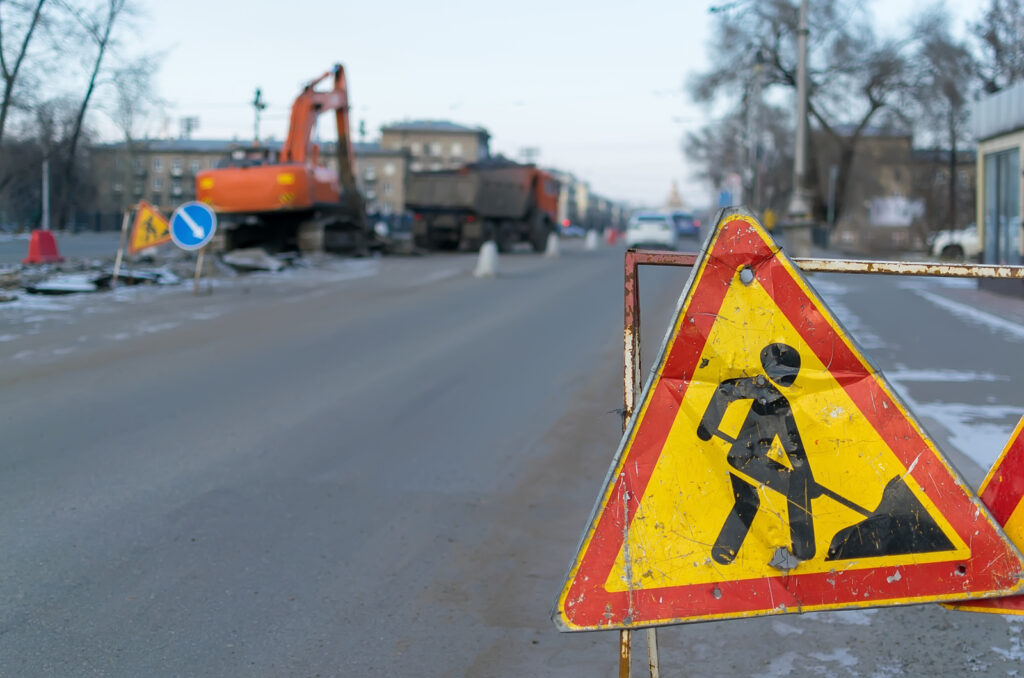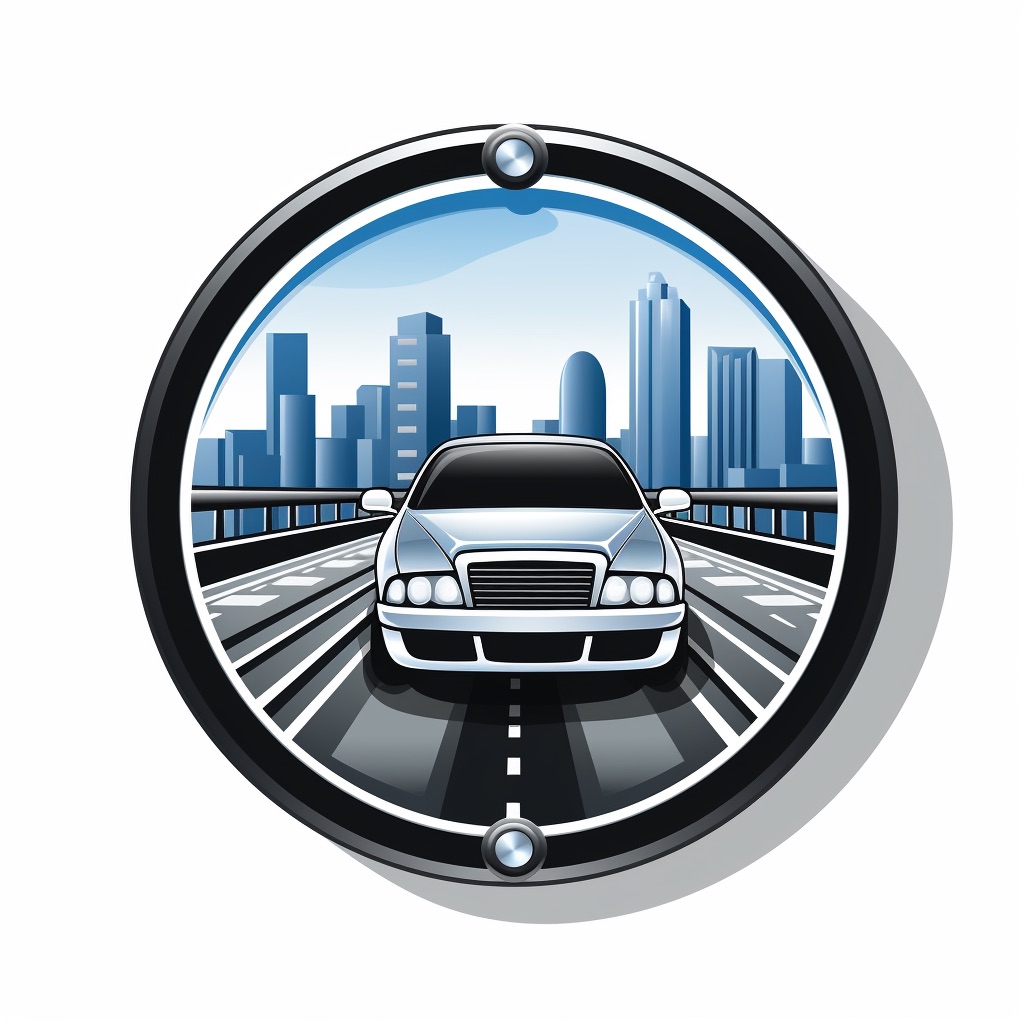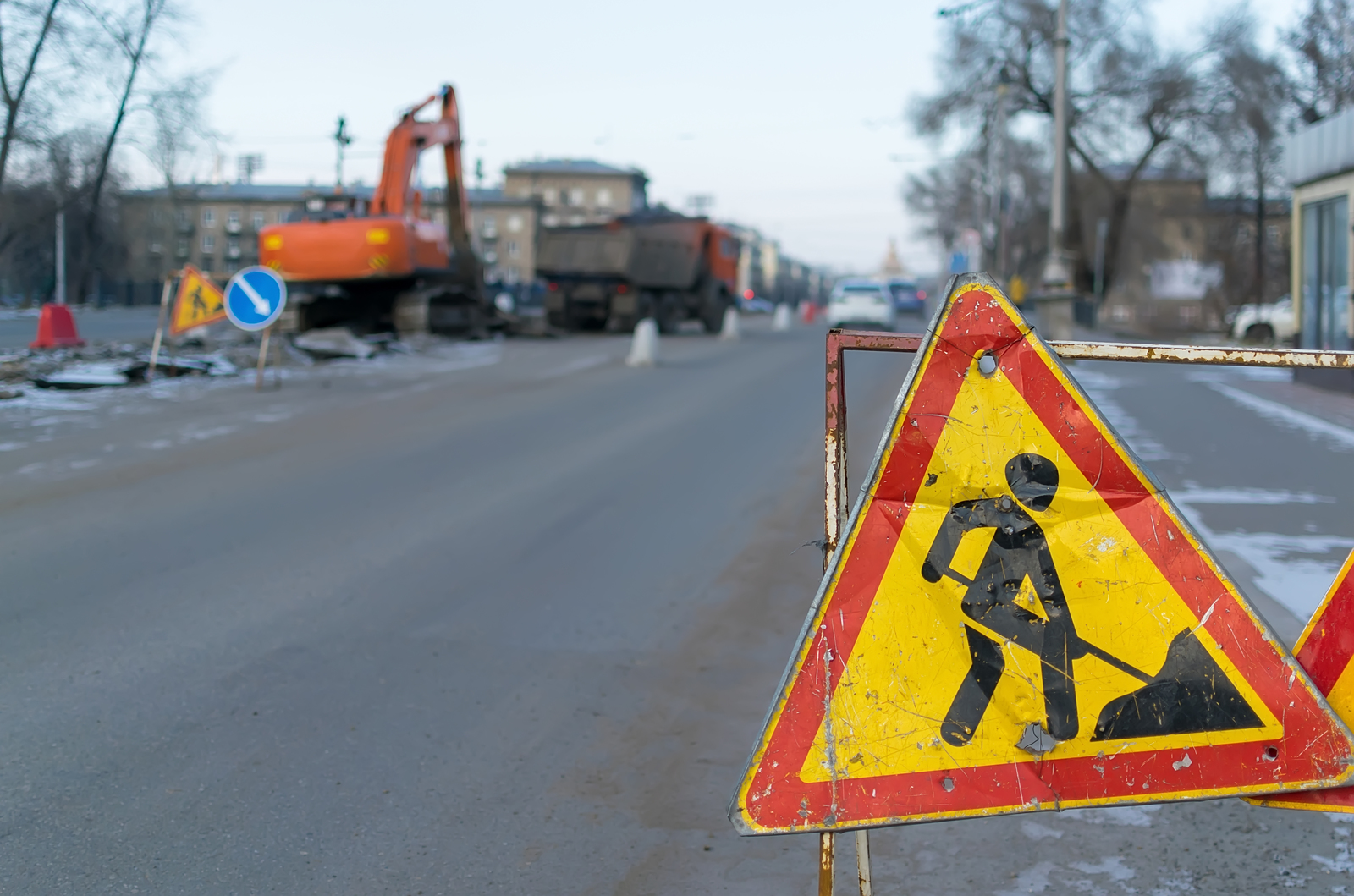Driving Through Work Zones: Obeying Speed Limits
Definition of a Work Zone
A work zone is where road construction, maintenance, or repair activities occur. Construction sites can be found on highways, county roads, and city streets across the country. Typically, work zones are marked with orange cones, barrels, or barriers that indicate a reduced speed limit. They are clearly recognizable by the presence of workers, heavy equipment, and materials.
Obeying Speed Limits in Work Zones
Obeying speed limits is essential to being a responsible driver. However, it is particularly crucial when driving through work zones. According to statistics taken from the Federal Highway Administration (FHWA), an estimated 700 fatalities occur yearly due to work zone accidents. Furthermore, speeding has been identified as one of the leading causes of crashes in these areas. When drivers ignore posted speed limits in work zones, they put themselves and others at risk. While dodging vehicles, workers trying to complete their tasks pose potential hazards for drivers who may not have time to act quickly enough to avoid hitting them. Moreover, motorists who exceed speed limits may also cause damage to equipment and other infrastructure that may require additional time and resources to repair.

Speeding in a Work Zone
Speeding tickets for driving through a work zone usually carries more severe consequences than regular speeding fines due to the higher potential risks involved when driving in these areas. While fines vary depending on local laws and jurisdictions explicitly related to workers’ safety (in some cases doubling), many states have instituted laws that increase penalties for those caught exceeding posted limits within construction zones. In addition to higher fines, judges often take violations committed within these areas seriously, resulting in more severe penalties. In some cases, drivers may face suspension or revocation of their driver’s license or be required to attend traffic school. These legal consequences make it especially important for motorists to care extra while driving through work zones.
Law and Penalties for Speeding in a Work Zone
Legal Speed Limits in Work Zones
Work zones are designed to protect the workers who ing on infrastructure projects. It is not uncommon for construction workers to work close to moving traffic with heavy machinery, which makes their job quite dangerous. To ensure the safety of the workers, state laws have established reduced speed limits in work zones. Work zone speed limits vary by state, but they usually range from 25-45 mph. In some cases, there may be reduced speed limits set up around the clock, while others may only apply during specific hours of the day. Signs indicate these speed limit changes and are enforceable by law enforcement officers.
Increased Fines and Penalties for Speeding in Work Zones
Because speeding through a work zone can be deadly for workers and drivers alike, most states have increased penalties associated with traffic violations within a work zone. The fines associated with speeding tickets received in a work zone can be double or even triple that of a regular speeding ticket. In addition to higher fines, many states add points to your personal driving record when you receive a fine for speeding in a work zone. Accumulating too many points can lead to higher insurance prices or even suspending your driving license. Some states also require drivers who receive tickets in work zones to attend traffic safety classes or community service programs.
Possibly Suspended or Revoked Driver’s License
Based on the severity of your offense and driving history, you could face suspension or revocation of your driver’s license if caught speeding in a work zone. Losing your license can severely affect your ability to commute to school or work, travel for leisure, and more. Most states will consider suspending or revoking your license if you accumulate too many penalty points on your personal driving record within a specific timeframe. In some cases, you may be able to reduce the number of points on your personal record by taking defensive driving courses or other similar programs. However, if you violate traffic laws, you could lose your license for an extended time. Speeding in a work zone can have severe consequences beyond getting a ticket. Following posted speed limits and stay alert for workers and equipment in construction areas is essential. Doing so can help keep yourself and other people safe while avoiding costly fines and penalties.
Risks and Dangers of Speeding in a Work Zone
Increased Risk of Accidents and Injuries to Workers and Drivers Alike
Drivers must be vigilant when driving through work zones and follow flaggers’ posted signs and directions. Speeding in a work zone might lead to severe accidents that put both workers and drivers at risk. Workers are often required to be on or near the road, making them vulnerable to being hit by a vehicle. Speeding drivers have less time to react if they suddenly come across a worker or construction vehicle, which can result in a collision. Furthermore, the presence of construction vehicles means that roads may be narrower than expected, with lane closures or detours. This can create confusion for drivers who aren’t paying attention, causing them to make sudden lane changes or turns without warning.
Potential Damage to Equipment, Materials, and Infrastructure
Work zones may involve heavy machinery or equipment not typically on the roadways. These machines can be damaged if hit by a speeding vehicle, which could delay the completion of the project. In addition, materials such as asphalt or concrete may be laid out on the roadway during certain stages of construction. If these materials are damaged due to speeding vehicles driving over them before they have been adequately set, it could cause delays in finishing the job. Moreover, speeding vehicles can also damage infrastructure, such as barricades or cones used for traffic control. Damaged barricades pose an increased risk for workers since they no longer provide proper protection while directing traffic through designated areas.
Long-term Effects on The Community Including Delays and Economic Costs
In addition to immediate risks posed by speeding in work zones, long-term effects affect wider communities, including economic costs caused by delays due to accidents. Work zones often slow down traffic and can cause delays, leading to missed appointments or meetings, making timely delivery of goods impossible, and leading to financial losses of millions. Furthermore, delays in finishing construction projects can lead to additional costs for the government or private companies involved. Extended construction periods mean that more resources are required for the execution of the project, increasing overall expenses. These costs may be passed on to taxpayers or customers who use the related services, resulting in higher prices for goods and services. All these factors mean that driving carefully through work zones is a matter of safety and an economic imperative for businesses and communities.
Tips for Avoiding Speeding Tickets in Work Zones
Pay attention to signs indicating reduced speed limits
One of the essential tips for avoiding a speeding ticket in a work zone is to pay attention to the signs indicating a reduced speed limit. These signs are usually posted well before the work zone, alerting drivers that they need to slow down. If you fail to obey these signs, you could end up with a costly ticket. In addition to paying serious attention to the speed limit signs, you should be aware of any other warning signs posted in the area. These may include signs warning of lane closures, detours, or other hazards. By having an awareness of these warning signs and adjusting your driving accordingly, you can avoid getting pulled over by law enforcement.
Stay alert for workers, vehicles, and equipment
Another essential tip for avoiding speeding tickets in work zones is to stay alert for workers, vehicles, and equipment. Construction sites can be dangerous places for both workers and drivers alike. By keeping an eye out for people working on or near the roads, as well as construction vehicles and equipment moving around the site, you can avoid causing an accident or receiving a citation. It’s important to remember that work zones are often dynamic environments that can change rapidly. Workers may move around frequently, vehicles may enter or exit unexpectedly, and construction materials may be transported across roadways. By staying alert while driving through these areas and being prepared for sudden changes in traffic patterns or conditions, You can reduce your likelihood of being involved in an accident or receiving a traffic citation.
Plan for possible delays
It’s always a good idea to plan when driving through work zones. These areas are often associated with traffic congestion due to lane closures or detours which may cause delays. Before entering a work zone, check for any traffic reports or updates that may alert you to potential delays. You can also use navigation tools or mobile apps to find alternate routes that may help you avoid the work zone altogether. By leaving early and giving yourself plenty of time to reach your destination, you can reduce the temptation to speed and get through the work zone as quickly as possible. Remember, it’s better to arrive a few minutes late than risk injuring someone or getting a costly speeding ticket in a construction area. Driving through a work zone requires extra attention and care on the part of drivers. You can certainly avoid getting into an accident or receiving a traffic citation by paying attention to signs indicating reduced speed limits and staying alert for workers, vehicles, and equipment. To reduce your chances of getting yourself pulled over for speeding in a work zone, plan for possible delays by checking traffic reports and finding alternate routes when necessary. By being responsible while driving through construction areas, we can all help keep everyone safe on our roadways.
Driving Through Construction Areas
Work zone crashes can lead to severe injuries and fatalities among workers and motorists. As such, drivers must remain responsible while behind the wheel in construction areas. Here we explore why being responsible is so important. Firstly, workers rely on passing motorists to keep them safe by obeying posted speed limits and road signs throughout work zones. It’s vital for drivers not only for their safety but also out of respect for others using the roads – whether they’re workers or other road users – they must drive carefully through construction sites at all times. Secondly, ignoring work zone signs puts you and other road users at risk because it increases the likelihood of accidents occurring within these areas. You may not see workers or other obstacles until too late, causing severe accidents and injuries. Responsible driving through work zones can help reduce traffic congestion levels. By obeying speed limits and being aware of your surroundings, you can avoid causing delays that affect yourself and others who depend on these roads for their daily commute.

